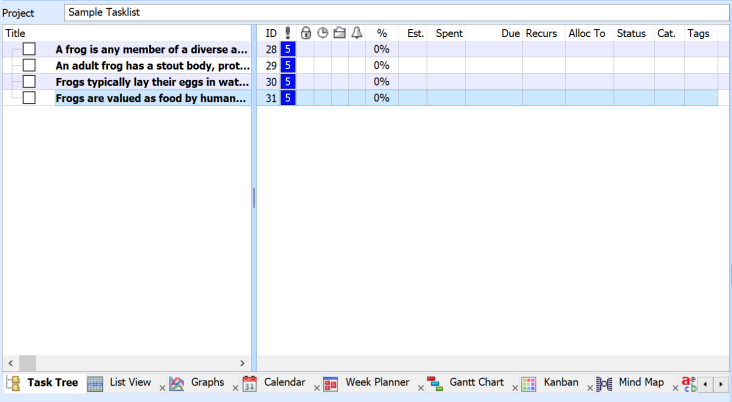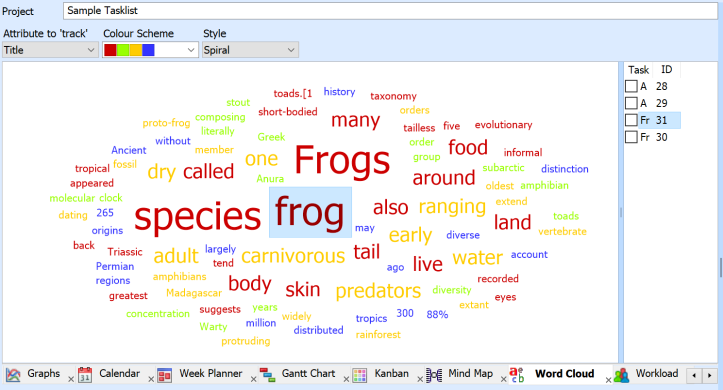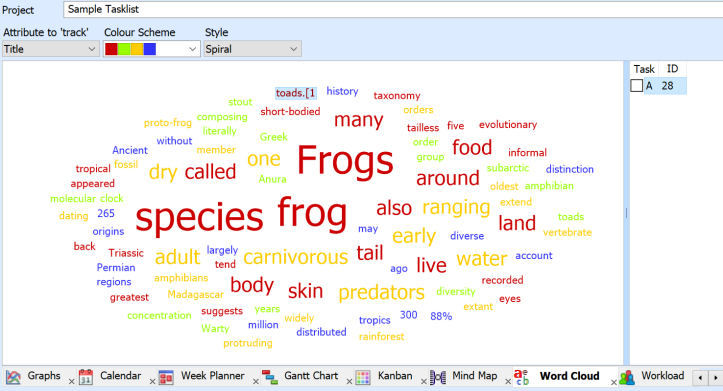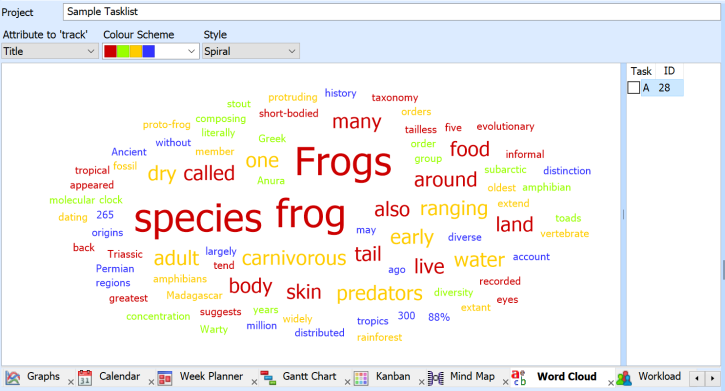Creating a Word Cloud
Word Clouds, or Word Maps, are a visual method for organizing ideas. These graphics generate a series of words at various sizes based on their frequency in a provided text, allowing users to visualize a text's main concepts or look for over-used words in a piece of writing. ToDoList allows users to generate Word Clouds from their tasks as one of the many task organization tools in the software. This guide explains the step-by-step process of creating a ToDoList Word Cloud as well as editing an existing Word Cloud.
1. Add a new task in ToDoList's "Task Tree" view with the  button in the program's toolbar, or by selecting New Task. A new task will appear in the "Project" window with the default text, "Task".
button in the program's toolbar, or by selecting New Task. A new task will appear in the "Project" window with the default text, "Task".

Here is the default appearance of a new task after populating the "Project" window.
2. Populate the "Project" window with as many tasks as needed. In this example, I've used paragraphs from the Wikipedia entry on frogs for my task content, with one paragraph of text per task.

3. Notice the list of task organization options below the Project window, with two arrow buttons on the far right of the list. These arrows are used to navigate the task organization options list. Navigate using these buttons until you see the option called "Word Cloud", seen here: . Select Word Cloud. Because you have already created tasks, a word cloud based on the text in your tasks will now generate.
. Select Word Cloud. Because you have already created tasks, a word cloud based on the text in your tasks will now generate.

The navigation arrows can be seen in the bottom right corner of this screenshot...

... and here is our generated Word Cloud!
To edit an existing Word Cloud, do the following:
1. Select the word in the Word Cloud you would like to remove.

I've selected "toads. [1" here because the inclusion of the footnote doesn't belong with the rest of the clean Word Cloud.
2. Right-click the word you would like to remove. A drop down menu with the ignore function will appear. Select Ignore [your word]. Now the word you have selected to ignore will be removed from the existing Word Cloud.

Now you have a complete Word Cloud! This function is especially useful nowadays as Google recently removed their Word Cloud in-browser generator.
